DESCRIPTION: This project focuses on a new approach to photocatalytic
disinfection of air and water streams through the exploitation of the unique
structural and optical properties of semiconductor oxide nanocatalysts
incorporated into the light trapping pores of porous silicon. This approach
to photocatalysis could potentially pave the way to the development of a
uniquely powerful technology for reliable, energy efficient, and inexpensive
destruction of a large group of pathogenic bacteria, viruses, protozoa, and
fungi which can present a significant threat to society. Of no lesser
importance is that the developed technology will be scalable and suitable for
integration with existing air/water purification systems for personal (e.g.,
emergency workers and military personnel) and stationary (e.g., hospitals and
residential buildings) use.
The porous silicon (PS) structure (see left figure) whose micron-size
open pores are decorated by clusters of silica or titania nanospheres 5-30 nm
in diameter (see middle figure), by themselves or impregnated with a noble
metal, forming appropriate size photocatalyst quantum dots (QD), constitute a
conceptually novel heterogeneous photocatalytic microreactor with possible
superior performance (see right figure). Its success is based on four factors.
First, micro-PS can provide a uniform and highly effective (i.e., tightly
localized) illumination of the photocatalyst everywhere using the UV-VIS light
generated through PS electroluminescence or photoluminescence. Second, PS,
especially in the form of a hybrid macroporous-nanoporous structure, can
provide a large specific (i.e., per unit volume) surface area, owing to its
highly porous structure and enhanced by the additional surface area made
available via attached catalyst-based nanostructures. Third, photocatalysts in
the form of nanoparticles have been shown to often possess superior catalytic
properties as compared to a conventional bulk catalyst by virtue of the
electronic modification of the catalyst through size quantization . Finally,
because of the small characteristic size of the PS pores forming the reactor
flow network, we can essentially eliminate diffusion limitations (~1/D^2,
where D is the pore diameter) on the rate of the heterogeneous chemical
reaction. This mode can achieve reaction kinetics at its intrinsic rate while
maintaining sufficient reactor throughput using parallel chemical processing
in many identical reactor units.
Our current efforts include: (1) using porous silicon with a well-controlled
geometry and surface chemical composition which, at the same time,
acts as a light-trapping and reactor-supporting structure and as an
internal light source for photocatalysis as we exploit its luminescence;
(2) producing TiO2-xNx, silica (SiO2), and SiO2-xNx nanospheres and
agglomeration within the micropores of the PS reactor to form photocatalyst
quantum dots, (3) gold impregnating these nanostructures using surface-hydroxyl group-metal complexation and coating the nanostructures using electroless
deposition techniques to enhance the quantum efficiency of photooxidation ,
(4) characterizing experimentally the PS photocatalytic reactor and its
key elements, and (5) demonstrating reactor performance using selected
model analytes.
COLLABORATION: Prof. James Gole (GT Physics), Drs. Mark King and Susan Ray
(Emory Medical School and Grady Hospital)
 Project #3
:
"Fluid Mechanics, Mass Transport, and Electrochemistry of Biochemical Interface Imaging Using AFM-Integrated Scanning Electrochemical and Optical Nanoprobes"
Project #3
:
"Fluid Mechanics, Mass Transport, and Electrochemistry of Biochemical Interface Imaging Using AFM-Integrated Scanning Electrochemical and Optical Nanoprobes"
DESCRIPTION: The present project focuses on an innovative multidimensional
approach for the investigation of cell communication processes at the
molecular level. In this project, novel, innovative and interdisciplinary
research is emphasized with focus on the application of integrated scanning
nanoprobe sensing systems. Scanning probe microscopy (SPM) techniques
provide powerful means for obtaining chemical, topographical and optical
information with high spatial resolution. Each technique - atomic force
microscopy (AFM), scanning nearfield optical microscopy (SNOM) and
scanning electrochemical microscopy (SECM) - is designed to provide a
specific kind of data.
To date, none of these individual techniques provide simultaneous information
with high selectivity and sensitivity on multiple parameters correlated in
space and time, information required for in situ investigations of complex
biological systems and heterogeneous matrices.
In collaboration with Professor Mizaikoff's group at GT Chemistry, we work
on developing the combinations of SECM-SNOM and SECM-AFM-SNOM, along with
inverted confocal microscopy and IR spectroscopy, and investigate the
application of these combined techniques for localization of exocytotic
events at the cell surface. With the developed instrumentation, a unique set
of multiple analytical parameters correlated in space and time will be
obtained, which is critical to the investigation of complex biosystems and
biological processes. Our part in this project is in development of process
simulation and visualization tools for quantitative interpretation of the
nanoprobe images.
The mathematical modeling and simulation of the electrochemical and physical
processes taking place during the scanning process is essential for
optimizing the design of integrated SECM-AFM scanning nanoprobes, as well
as for interpretation of the imaging data. A dynamic electrochemical process
involves the transport of reactants (reduced and oxidized species) and their
intermediates between a metal electrode and a studied conducting or
insulating substrate/interface. This includes adsorption/desorption of
reactants, surface diffusion and phase formation, interfacial electron
transfer(s), and possibly homogeneous reactions in the solution. During the
experimental study of reaction kinetics and mechanisms, the challenge is to
identify quantitatively the relative importance of each of these steps.
Accordingly, quantitative interpretation of the experimental results
demands rigorous modeling of the underlying physicochemical phenomena.
The key feature of dynamic electrochemistry is that the mass flux of
reactants at the electrode/solution interface is a direct measure of the
interfacial reaction rate and, if the mass transport is sufficiently high
and well defined (i.e., calculable), the kinetics of the interfacial and/or
solution processes can be measured unambiguously. Thus, a carefully
validated mathematical model of the mass transport process should
become the key tool for quantitative evaluation of the cellular events
investigated in the project.
The complex transport phenomena underlying SECM-AFM require visualization of
multiple dependent variables (e.g., ion concentrations, velocity components,
tip current, and others) recorded on the multitude of spatial and time scales,
and the commercial visualization software programs are generally not able to
provide satisfactory environment to handle such multivariable-multiscale
datasets in an integrated framework. To this end, we propose to develop an
interactive, hierarchical data flow visualization tool capable of visualizing
and comparing the data obtained using macroscale continuous simulations and
that from the microscale (atomic) level simulations by building on our
latest advances in this area.
SPONSOR: NSF (completed), NIH (current)
COLLABORATION: Dr. Christine Kranz, Prof. Boris Mizaikoff (GT Chemistry), Prof. Doug Eaton (Emory)
STUDENTS: Audric Saillard (M.S.), Youg Koo Kwon (Ph.D.), Dr. Vladimir Zarnitsyn (Post-doc), and Dr. Peter Kottke (Post-doc)
RELEVANT PUBLICATIONS:
- Zarnitsyn, V. and Fedorov, A., Mechanosensing using drag force for imaging soft biological membranes, Langmuir, 23 (11), 6245-6251 (2007).
- Kottke, P. A., Saillard, A., and Fedorov, A., 2006, Droplet growth and transition to coalescence in confined geometries, Langmuir, Vol. 22(13), 5630-5635.
- Kottke, P. A. and Fedorov, A., 2005, Advective and transient effects in combined AFM/SECM operation, J. Electroanal. Chem., Vol. 583, No. 2, pp. 221-231.
- Kottke, P. A. and Fedorov, A., 2005, Generalized principles of unchanging total concentration, J. Phys. Chem. B, Vol. 109, pp. 16811-16818.
- Fan, T.-H., Mayle, T., Kottke, P., and Fedorov, A. G., 2006, "Simulation of Electroanalysis Using Boundary Element Method", Trends in Analytical Chemistry, Vol. 25 (1), pp. 52-65.
- Fan, T. H. and Fedorov, A. G., 2004, "An Integrated Transport Model for Tracking Exocytotic
Event Dynamics Using a Microelectrode", Analytical Chemistry, Vol. 76, pp. 4395-4405.
- Fan, T. H. and Fedorov, A., "An Integrated Transport Model for
Tracking of Individual Exocytotic Events Using a Microelectrode",
Seventh Nanotechnology Conference and Trade Show NANOTECH 2004, Boston, Massachusetts, March 7-11, 2004.
- Fan, T. H. and Fedorov, A. G., 2003, "Electrohydrodynamics and
Surface Force Analysis in AFM Imaging of a Charged, Deformable Biological
Membrane in a Dilute Electrolyte Solution", Langmuir,
Vol. 19, pp. 10930-10939.
- Fan, T. H. and Fedorov, A. G., "Electrohydrodynamic Interactions of an AFM Tip and a Biological Membrane", Sixth Nanotechnology Conference and Trade Show NANOTECH 2003, San Francisco, California, February 23-27, 2003.
- Fan, T. H. and Fedorov, A. G., 2003, "Analysis of Hydrodynamic
Interactions During AFM Imaging of Biological Membranes", Langmuir, Vol. 19, pp. 1347-1356.
- Fan, T. H. and Fedorov, A. G., 2001, "Visualization of Atomic
Force Microscopy from Molecular Dynamics Simulations", ASME Journal of
Heat Transfer, Vol. 123, pp. 619.
 Project #4
:
"Model-Based Optimal Design of (Bio)Chemical Sensors and Microfluidic Drug/Gene Delivery Devices"
Project #4
:
"Model-Based Optimal Design of (Bio)Chemical Sensors and Microfluidic Drug/Gene Delivery Devices"
DESCRIPTION: In this project, a model-based methodology for optimal design of
polymer coated chemical sensors is developed and is illustrated for the example of infrared evanescent field chemical sensors. The methodology is based on
rigorous and computationally efficient modeling of combined fluid mechanics
and mass transfer. A simple algebraic equation for the optimal size of the
sensor flow cell is developed to guide sensor design and validated by
extensive CFD simulations. Based upon these calculations, optimized
geometries of the sensor flow cell are proposed to further improve the
response time of chemical sensors.
Independent of the specific transduction mechanism, all chemical sensors
generate signals upon molecular interaction of their selective chemical
recognition interface with the desired target analyte. To increase the
detection threshold, the analyte of interest is usually preconcentrated by
various techniques, utilizing hydrophobic polymer layers as preferred
implementation in many sensing applications operated in aqueous environments.
In depth understanding of analyte enrichment in the polymers due to bulk
solvation effects has been a major issue of physical and analytical chemistry
over several decades prompted. In the chemical sensing community, major
efforts have recently been invested into modeling and optimization of
polymer-based enrichment layers, whereas optimization of the sensor flow
cell geometry and mass transport was almost completely untouched. This is a
surprising fact, in particular since data acquisition for chemical sensors
can be a complex process; thus, appropriate simulation models of chemical
sensors can serve as highly valuable tool for sensor design and data
interpretation.
During decade only few relatively simplistic models have been developed for
different types of chemical sensors, ranging from fiber-optic chemical sensor
to dopamine biosensor and thermoelectric gas sensors. It is widely believed
that miniaturization of the cross-sectional area of the sensor flow cell
results in reduction of the response time, as well as threshold of detection.
This "intuitive" rule-of-thumb is questioned in this project, aiming at
establishing a sound theoretical basis for optimal design of the flow cell
for polymer coated chemical sensors. In addition, multicomponent mass transfer
effects are rigorously modeled to establish validity limits for commonly
used pseudo-binary diffusion approximation for treating mixtures containing
multiple analytes of interest.
SPONSOR: ALCOA Fellowship & GT Research Foundation (completed)
COLLABORATION: Prof. Boris Mizaikoff (GT Chemistry), Prof. Gole (GT Physics), Prof. Charlie Hao (Emory/Winship Cancer Institute), and Drs. Mark Papania and Rotta (CDC).
STUDENTS: Cynthia Phillips (M.S.)
RELEVANT PUBLICATIONS/PATENTS:
- Chilmonczyk, M. A., Kottke, P. A., Stevens, H. Y., Guldberg, R. E., and Fedorov A. G Dynamic mass spectrometry probe (DMSP) for ESI-MS monitoring of bioreactors for therapeutic cell manufacturing, Biotech. & Bioeng., in press, DOI: https://dx.doi.org/10.1002/bit.26832 (2018). News Coverage
- Meacham, J. M., Durvasula, K., Degertekin, F. L., and Fedorov, A., Enhanced intracellular delivery via coordinated acoustically-driven shear mechanoporation and electrophoretic insertion, Scientific Reports, 8, 3727-3736 (2018). News Coverage
- Silva, J., Geryak, R., Loney, D., Kottke, P.A., Naik, R., Tsukruk, V. V., and Fedorov, A., Stick-slip water penetration into capillaries coated with swelling hydrogel, Soft Matter, 11, 5933-5939 (2015). News Coverage
- Gittens, R.A., Olivares-Navarrete, R., Cheng, A., Anderson, D., McLachlan, T., Stephan, I., Fedorov, A., Rupp, F., Geis-Gerstorfer, J., Sandhage, K.H., Boyan, B.D., and Schwartz, Z., The role of titanium surface micro/nanotopography and wettability on the differential response of human osteoblast lineage cells, Acta Biomaterialia, 9, 6268-6277 (2013).
- Kottke, P.A. and Fedorov, A., Physics-based, reduced-order gas cloud with radiative transport model for rapid simulation of hyperspectral infrared sensors, Optical Eng., 51 (5), 056401-11 (2012).
- Kottke, P. A., Fedorov, A.G., and Gole, J. L., Multiscale transport in porous silicon gas sensors, In Modern Aspects of Electrochemistry, 43/44, M. Schlesinger (Editor), Springer, 2007 (invited).
- Zarnitsyn, V., Meacham, J. M., Varady, M., Hao, C., Degertekin, F. L., and Fedorov, A., Electrosonic ejector microarray for drug and gene delivery, Biomedical Microdevices, 10 (2), 299-308 (2008).
- Kottke, P. A., Kranz, C., Kwon Y-K, Masson, J.-F., Mizaikoff, B. M., and Fedorov, A., Theory of polymer entrapped enzyme ultramicroelectrodes: Fundamentals, J. Electroanal. Chem., 612 (2), 208-218 (2008).
- Kottke, P. A., Kranz, C., Kwon Y-K, Masson, J.-F., Mizaikoff, B. M., and Fedorov, A., Theory of polymer entrapped enzyme ultramicroelectrodes: Application to glucose and adenosine triphosphate detection, J. Electroanal. Chem., 618 (1/2), 74-82 (2008).
- Phillips, C. and Fedorov, A., 2004, "Multicomponent Mass Transfer in Polymer-Coated Chemical Sensors", Sensors & Actuators B, Vol. 99, No. 2-3, pp. 273-280.
- Phillips, C., Jakusch, M., Steiner, H., Mizaikoff, B., and
Fedorov, A., 2003, "Model-based Optimal Design of Polymer Coated Chemical
Sensors", Analytical Chemistry, Vol. 75, No. 5, pp. 1106-1115.
- Fedorov, A. G. and Degertekin, F. L., "Electrosonic Cell Manipulation Device and Methods of Use Thereof", U.S. Patent # 7,704,743 (2010).
- Meacham, J. M., Fedorov, A. G., and Degertekin, F.L. "Self-Pumping Structures and Methods of Use Self-Pumping Structures", U.S. Patent App. (2011).
 Project #5
:
"Thermal Management of Next Generation Integrated Circuits and Interconnects"
Project #5
:
"Thermal Management of Next Generation Integrated Circuits and Interconnects"
DESCRIPTION: Thermal management is a systems issue, spanning several orders in
length scales from the interconnects and transistors to an entire data center.
The industry has traditionally addressed these issues in segments,
isolating the junction-to-case thermal management problem from the
case-to-ambient problem, etc. This situation prevents truly optimal
system-level solutions and consumes the entire chip backside for thermal
management using bulky metal heat sinks and fans, making it difficult to
develop novel strategies that release surface area for optical and RF I/O.
The ITRS projects high performance single chip powers to approach 288 W by
2012, which yields heat fluxes that simply cannot be accommodated using this
disjointed approach. Furthermore, the integration of multiple circuit
functionalities onto a single chip, i.e., RF, optical, CMOS, MEMS, etc.,
the demands for highly localized temperature control and hotspot cooling
cannot be accommodated using a traditional package centric approach.
The best approach for satisfying the future needs is to use a multiscale
integrated approach. These imply heat fluxes of ~100 W/cm2 at the chip
level and 10 kW/ft2 at the data center floor level. For the portables,
while the heat fluxes are lower, the space and battery power constraints, as
well as the more stringent touch temperature limits are driving a search for
new solutions. Along with the increase in power, there are a number of
other emerging trends driving the need for unique thermal solutions:
(i) Highly non-uniform power dissipations on the CPU chip due to integration
of cache memory with the processor, (ii) Partial or no access to the top
surface of the die due to optical interconnects, (iii) Increasing importance
of Joule heating in interconnects.
The focus of our current efforts is on the development and assessment
of three classes of thermal management devices for both stationary high
performance and portable systems. The single phase and phase-change based
micro and nano fluidic schemes are being developed that effectively utilize
through-the-board thermal pathways. Additionally, schemes for the effective
delivery and utilization of liquefied air in an open loop flow arrangement
to achieve both effective thermal management, as well as the performance
benefits of low temperature operation are being explored. We also explore the
use of carbon nanostructures for localized chip-centric thermal management and
mist impingement cooling at the chip level using micromachinned ultrasonic
acoustic atomization.
SPONSOR: Interconnect Focus Center/MARCO/DARPA (completed), AFOSR (completed), DARPA (completed), NASA (current)
COLLABORATION: Prof. Yogendra Joshi (GT ME), Prof. Paul Kohl (GT ChE), Prof. Bakir (GT ECE), Prof. Sitaraman (GT ME), Prof. Vladimir Tsukruk (GT MSE)
STUDENTS: Stephane Launay (Post-doc), Xianjin Wei (Post-doc), Prajesh Bhattacharya (Post-doc), Yoon Jo Kim (Post-doc), Robert Wadell (M.S.), Shankar Narayanan (Ph.D.), Vivek Sahu (Ph.D.), Craig Green (Ph.D.), Mohammed Nasr (M.Sc.), Joel Chapman (Ph.D.)
RELEVANT PUBLICATIONS/PATENTS:
- Green, C. E., Sahu, V., Hu, Y., Joshi, Y. K., and Fedorov, A.G., Passive and active thermal technologies: modeling and evaluation, Handbook on 3D Electronic Packaging: Design, Test, and Thermal Management, M. Bakir (Editor), Vol. 4, pp. 35, Wiley-VCH Books, 2018 (invited).
- Chapman, J. D., Kottke, P. A., and Fedorov, A. G, Enhanced thin film evaporation via impinging electrospray liquid jets with entrained air streaming, Int. J. Heat Mass Transf., in review (2018).
- Narayanan, S., Kottke, P. A., Joshi, Y. K., and Fedorov, A.G., Gas assisted evaporation heat and mass transfer, Annual Review of Heat Transfer, Vol. 19, 2015 (invited).
- Yazawa, K., Fedorov, A.G., Joshi, Y. K., and Shakouri, A., Energy efficient solid-state cooling for hot spot removal, In Cooling and Packaging Microelectronic and Nanoelectronic Equipment: Challenges, Opportunities and Emerging Technologies - A Festschrift for Prof. Avi Bar-Cohen, WSPC Series in Advanced Integration and Packaging, Vol. 3, pp. 195-226, World Scientific Publishing Co. Pte. Ltd., 2014.
- Chapman, J. D., Kottke, P. A., and Fedorov, A. G, Towards using nanoelectrospray for evaporation heat transfer enhancement, ITherm 2017: IEEE Intersociety Conference on Thermal and Thermomechanical Phenomena in Electronic Systems, Orlando, FL, USA, May 30 - June 2, 2017 (Best Presentation Award).
- Nasr, M. N., Green, E. C., Kottke, P. A., Zhang, H., Sarvey, T. E., Joshi, Y., Bakir, M. and Fedorov, A., Flow regimes and convective heat transfer of refrigerant flow boiling in ultra-small clearance microgaps, Int. J. Heat Mass Transf., 108, 1702-1713 (2017).
- Nasr, M. N., Green, E. C., Kottke, P. A., Zhang, H., Sarvey, T. E., Joshi, Y., Bakir, M. and Fedorov, A., Hotspot thermal management with flow boiling of refrigerant in ultrasmall microgaps, ASME J. Electronic Packaging, 139, 011006-011014 (2017).
- Lorenzini, D., Sarvey, T., Zhang, X., Hu, Y., Fedorov, A., Bakir, M., and Joshi, Y. K., Embedded single phase microfluidic thermal management for non-uniform heating and hotspots using microgaps with variable pin fin clustering, Int. J. Heat Mass Transf., 103, 1359-1370 (2016).
- Han, X., Fedorov, A., Joshi, Y. K., Flow boiling in microgaps for thermal management of high heat flux microsystems, ASME J. Electronic Packaging, 138 (4), 040801-13 (2016).
- Kottke, P. A., Yun, T. M., Green, C., Joshi, Y. K. and Fedorov, A. G., Two-phase convective cooling for ultra-high power dissipation in microprocessors, ASME J. Heat Transfer, 138 (1), 011501-011507 (2015). News Coverage
- Sahu, V., Fedorov, A., Joshi, Y. K., Bahk, J.-H., Wang, X., and Shakouri, A., Experimental characterization of hybrid solid-state and fluidic cooling for thermal management of localized hotspots, IEEE Comp. Pack. Manuf. Tech., 5(1), 57-64 (2015).
- Plawsky, J. L., Fedorov, A. G., Garimella, S. V., Ma, H. B., Maroo, S. C., Chen, L., and Nam, Y., Nano- and microstructures for thin film evaporation - a review, Nanoscale & Microscale Thermophys. Eng., 18, 251-269 (2014), invited.
- Green, C. E.., Fedorov, A., and Joshi, Y. K., Time scale matching of dynamically operated devices using composite thermal capacitors, Microelectronics J., 45, 1069-1078 (2014).
- Sahu, V., Fedorov, A., Joshi, Y. K., Transient characterization of hybrid microfluidic-thermoelectric cooling scheme for dynamic thermal management of microprocessors, ASME/IEEE J. Electronic Packaging, 136 (3), 31014-31019 (2014).
- Sahu, V., Fedorov, A., Joshi, Y. K., Computational and experimental investigation of thermal coupling between superlattice coolers, IEEE Trans. Adv. Pack., 4 (4), 622-631 (2014).
- Narayanan, S., Fedorov, A., and Joshi, Y., Heat and mass transfer during evaporation of thin liquid films confined by porous membrane subjected to air jet impingement, Int. J. Heat Mass Transfer, 58, 300-311 (2013).
- Kim, S., Kim, Y. J., Joshi, Y. K., Fedorov, A., and Kohl, P. A., Absorption heat pump/refrigeration system utilizing ionic liquid and hydrofluorocarbon refrigerants, ASME/IEEE J. Elect. Pack., 134, 031009-0130180 (2012).
- Kim, Y. J., Kim, S., Joshi, Y. K., Fedorov, A., and Kohl, P. A., Thermodynamic analysis of an absorption refrigeration system with ionic-liquid/refrigerant mixture as a working fluid, Energy, 44 (1), 1005-1016 (2012).
- Anderson, D., Gupta, M., Voevodin, A., Hunter, C., Putnam, S.A., Tsukruk, V,V., and Fedorov, A., Using amphiphilic nanostructures to enable long-range ensemble coalescence and surface rejuvenation in dropwise condensation, ACS Nano, 6 (4), 3262-3268 (2012).
- Joshi, Y., Fedorov A. G., Wei, X., and Gurrum, S. P. Limits of current heat removal technologies and opportunities, In Integrated Interconnect Technologies for 3D Nanoelectronic Systems, M. Bakir & J. Meindl (Editors), Artech House, 2009 (invited).
- Narayanan, S., Fedorov, A., and Joshi, Y., Interfacial transport of evaporating water confined in nanopores, Langmuir, 27 (17), 10666-10676 (2011).
- Rykaczewski, K., Scott, J. H. J., Fedorov, A., Electron beam heating effects during ESEM imaging of water condensation on superhydrophobic surfaces, Appl. Phys. Lett., 98, 093106 (2011).
- Dietz, C., Rykaczewski, K., Fedorov, A. G., and Joshi, Y., Visualization of droplet departure on a superhydrophobic surface and implications to heat transfer enhancement during drop-wise condensation, Appl. Phys. Lett., 97 (3), 033104-033106 (2010).
- Narayanan, S., Fedorov, A., and Joshi, Y., On-chip thermal management of hot spots using a perspiration nanopatch, J. Micromech. Microeng. , 20 (7), 075010-075020 (2010).
- Fedorov, A. and Meacham, J. M., Evaporation-enhanced, dynamically-adaptive air (gas)-cooled heat sink for thermal management of high heat dissipation devices, IEEE Trans. Comp. Pack. Tech., 32 (4), 746-753 (2009).
- Kim, Y. J., Joshi, Y., and Fedorov, A., Lee, Y. J., and Lim, S. K., Thermal characterization of interlayer microfluidic cooling of three-dimensional IC with non-uniform heat flux, ASME J. Heat Transfer, 132 (4), 041009-9 (2010).
- Green, C., Fedorov, A., and Joshi, Y., Scaling analysis of performance trade-offs in electronics cooling, IEEE Trans. Comp. Pack. Tech., 32 (4), 868-875 (2009).
- Green, C., Fedorov, A., and Joshi, Y., Fluid-to-fluid spot-to-spreader (F2/S2) hybrid heat sink for integrated chip-level and hotspot-level thermal management, ASME J. Electronic Packaging, 131 (2), 025002-09 (2009).
- Kim, Y. J., Joshi, Y., and Fedorov, A., Thermally dependent characteristics and spectral hole burning of double-lasing quantum-dot laser, J. Appl. Phys., 107, 073104-073111 (2010).
- Sahu, V., Joshi, Y., and Fedorov, A., Hybrid solid state/fluidic cooling for hot spot removal, Nanoscale Microscale Thermophys. Eng., 13 (3), 135-150 (2009).
- Narayanan, S., Fedorov, A., and Joshi, Y., Gas-assisted thin-film evaporation from confined spaces for dissipation of high heat fluxes, Nanoscale & Microscale Thermophys. Eng., 13 (1), 30-53 (2009).
- Fedorov, A. and Meacham, J. M., Evaporation-enhanced, dynamically-adaptive air (gas)-cooled heat sink for thermal management of high heat dissipation devices, ITherm 2008, Orlando, Florida, USA May 28-31, 2008.
- Sahu, V., Fedorov, A., and Joshi, Y., Hybrid solid-state/fluidic cooling for hot spot removal, ITherm 2008, Orlando, Florida, USA May 28-31, 2008
- Green, C., Fedorov, A., and Joshi, Y., Fluid-to-fluid spot-to-spreader (F2/S2) hybrid heat sink for integrated chip-level and hotspot-level thermal management, ITherm 2008, Orlando, Florida, USA May 28-31, 2008.
- Narayanan, S., Fedorov, A., and Joshi, Y., Perspiration nanopatch for hot spot thermal management, InterPack'2007, Vancouver, BC, Canada, July 8-12, 2007.
- Coggins, C., Gerlach, D., Joshi, Y., and Fedorov, A., Scaling of single- and multiple-stage cascaded vapor compression refrigeration systems for electronics cooling, Int. J. Refrigeration, in review (2007).
- Suman, S., Fedorov, A., and Joshi, Y., Thermodynamic design of a compact thermal compressor for sorption assisted cryogenic cooling of electronics, Int. J. Refrigeration, in review (2007).
- Kim, Y. J., Joshi, Y., Fedorov, A., An absorption based miniature heat pump system for electronics cooling, Int. J. Refrigeration, 31 (1), 23-33 (2007).
- Kim, Y. J., Joshi, Y., Fedorov, A., Performance analysis of air-cooled microchannel absorber in absorption based miniature electronics cooling system, KSME J. Mech. Sci. Tech., 22, 338-349 (2008).
- Wadell, R., Joshi, Y., and Fedorov, A., Experimental investigation of compact evaporators for ultra low temperature refrigeration of microprocessors, ASME/IEEE J. Electronic Packaging, 129 (3), 291-299 (2007).
- Launay, S., Fedorov, A., Joshi, Y., Cao, A., and Ajayan P., Hybrid micro-nano structured thermal interface for pool boiling heat transfer enhancement, Microelectronics J., 37 (11), 1158-1164 (2006).
- Gurrum, S., Suman, S., Joshi, Y., and Fedorov, A., 2004, Thermal issues in next generation integrated circuits, IEEE Transactions on Device and Materials Reliability, Vol. 4, No. 4, pp. 709-715 (invited paper).
- Naeemi, A., Joshi, Y., Fedorov, A., Kohl, P., and Meindl, J.D., The urgency of deep sub-ambient cooling for gigascale integration, International Conference on Integrated Circuit Design and Technology ICICDT05, Austin, Texas, May 9-11, 2005.
- Suman, S., Fedorov, A., and Joshi, Y., Thermodynamic design of thermal compressor for sorption assisted cryogenic cooling of electronics, InterPack 05, San Francisco, CA, July 17-22, 2005.
- Launay, S., Fedorov, A., Joshi, Y., Cao, A., and Ajayan, P. M., Hybrid Micro-Nano Structured Thermal Interface for Pool Boiling Heat Transfer Enhancement, THERMINICS - International Workshop on Thermal Investigations of ICs and Systems, Sophia Antipolis, Ctte d'Azur, France, September 29-October 1, 2004.
- Suman, S., Fedorov, A., and Joshi, Y., Cryogenic Cooling of Electro
nics: Revisited, ITherm 2004, Las Vegas, Nevada, June 1-14 2004.
- Fedorov, A. and F. L. Degertekin, Micromachined Acoustic
mu-Atomizer for Mist Impingement Cooling of High Performance Electronics,
ONR Thermal Management Workshop, Naval Thermal Task Force
(NAFTTAF), US Naval Academy, Annapolis, Washighton, USA (April 8, 2003).
- Gurrum, S., Suman, S., Joshi, Y., and Fedorov, A., Thermal issues
in next generation integrated circuits, International Electronic
Packaging Technical Conference and Exhibition, Maui, Hawaii,
July 6-11, 2003.
- Fedorov, A. and Viskanta, R., 2000, "Three-Dimensional Conjugate
Heat Transfer in the Microchannel Heat Sink for Electronic Packaging",
International Journal of Heat and Mass Transfer, Vol. 43, pp. 399-415.
- Fedorov, A. and Viskanta, R., 1999, "Analysis of Conjugate Heat
Transfer in a Three-Dimensional Microchannel Heat Sink for Cooling of
Electronic Components", International Mechanical Engineering Congress
and Exposition IMECE'99, Nashville, Tennessee.
- Fedorov, A. and Viskanta, R., 1997, "A Numerical Simulation of
Conjugate Heat Transfer in an Electronic Package Formed by Embedded Discrete
Heat Sources in Contact with a Porous Heat Sink", ASME Journal of
Electronic Packaging, Vol. 119, pp. 8-16.
- Fedorov, A. G., Wadell, R., and Launay, S., "Vortex Tube Refrigeration Systems and Methods", U.S. Patent 7,669,428, Issued 03/2010.
- Launay, S., Fedorov, A. G., and Joshi, Y., "Thermal Management Devices, Systems, and Methods", U.S. Patent 7,532,467, Issued 06/2009.
- Fedorov, A. G., "Fluid-to-Fluid Spot-to-Spreader Heat Management Devices and Systems and Methods of Managing Heat ", U.S. Patent 8,082,978, Issued 12/2011.
- Fedorov, A. G., "Nano-Patch Thermal Management Devices, Methods, and Systems", U.S. Patent 7,545,644, Issued 06/2009.
- Fedorov, A. G., "Evaporation-Enhanced Thermal Management Devices, Systems, and Methods of Heat Management ", U.S. Patent 8,710,625, Issued 06/2014.
- Fedorov, A. G., "Thermal Ground Planes, Thermal Ground Plane Structures, and Methods of Heat Management", U.S. Patent App. 12/331,579 (2008).
- Fedorov, A. G., Green, C., Joshi, Y. K., "Devices Including Composite Thermal Capacitors ", U.S. Patents 8,378,453, Issued 02/2013; 8,710,625, Issued 04/2014; 8,878,340, Issued 11/2014.
- Fedorov, A. G., "Passive Heat Sink for Dynamic Thermal Management of Multiple Hot Spots", U.S. Patent 9,245,722, Issued 01/2016.
 Project #6
:
"Electron, Mass, and Heat Transport in E-Beam and Laser-Jet Chemical Vapor Deposition of Nanostructured Materials and Thin Film Coatings"
Project #6
:
"Electron, Mass, and Heat Transport in E-Beam and Laser-Jet Chemical Vapor Deposition of Nanostructured Materials and Thin Film Coatings"
DESCRIPTION: Focused electron beam assisted processing (FEBIP) is a unique nanofabrication tool which offers an opportunity to build sophisticated, three-dimensional structures from a variety of materials with truly nanoscale spatial resolution. These superb capabilities are equally matched by the complexity of intimately interacting physical processes underlying FEBIP, including transport of precursor gas molecules as well as electrons and phonons in the deposit. Through combination of rigorous theoretical analysis and carefully designed deposition experiments, our group obtained fundamental insight into physics of FEBIP, including definitive answers to the following key questions important to fundamental understanding and practical applications of the electron beam induced deposition: (1) what controls the rate of deposit growth; (2) what defines the shape of the deposit; and (3) how electron beam heating affects the crystallinity of the deposits. These results are of significant practical importance making an essential step in bringing this nanomanufacturing technology to the level of understanding ripe for exploitation by industry.
SPONSOR: NSF NIRT, SRC Nanomanufacturing, AFOSR, DOE BES (current).
COLLABORATION: Prof. Vladimir Tsukruk (GT MSE)
STUDENTS: Jeffrey Fisher (Ph.D.), Songkil Kim (Ph.D.), Matt Henry (Ph.D.) and Konrad Rykaczewski (Ph.D.)
RELEVANT PUBLICATIONS:
- Fisher, J., Kottke, P. A., and Fedorov A. G., Synthesis of crystalline metal nanomonoliths by e-beam reduction of negatively-electrified jets, Materials Today Physics, 5, 87-92 (2018).
- Henry, M., Kim, S. and Fedorov, A., High purity tungsten nanostructures via focused electron beam induced deposition with carrier-gas assisted supersonic jet delivery of organometallic precursors, J. Phys. Chem. C, 120 (19), 10584?10590 (2016).
- Kim, S, Russell, M., Kulkarni, D., Henry, M., Kim, S., Naik, R., Voevodin, A. A., Jang, S., Tsukruk, V. V. and Fedorov, A., Activating "invisible" glue: using electron beam for enhancement of interfacial properties of graphene-metal contact, ACS Nano, 10, 1042-1049 (2016).
- Fisher, K. Kottke, P. A., Kim, S., and Fedorov A. G., Rapid electron beam writing of topologically complex 3D nanostructures using liquid phase precursor, Nano Lett., 15 (12), 8385-8391 (2015). News Coverage
- Kim, S, Henry, M., and Fedorov, A., Using energized oxygen micro-jet for improved graphene etching by focused electron beam, Appl. Phys. Lett. , 107 (23), 233102 (2015).
- Kim, S, Russell, M., Henry, M., Kim, S., Naik, R., Voevodin, A. A., Jang, S., Tsukruk, V. V. and Fedorov, A., Dynamic modulation of electronic properties of graphene by localized carbon doping using Focused Electron Beam Induced Deposition, Nanoscale, 7, 14946-14952 (2015). News Coverage
- Kim, S, Kulkarni, D., Henry, M., Jang, S., Tsukruk, V. V. and Fedorov, A., Localized conductive patterning via Focused Electron Beam reduction of graphene oxide, Appl. Phys. Lett., 106, 133109 (2015).
- Fedorov, A., Kim, S, Henry, M., Kulkarni, D., Tsukruk, V. V., Focused electron beam induced processing (FEBIP) for emerging applications in carbon nanoelectronics, Appl. Phys. A ~V Mat. Sci. & Proc., invited, 117 (4), 1659-1674 (2014).
- Kim, S, Kulkarni, D., Davis, M., Kim, S., Naik, R., Voevodin, A. A., Jang, S., Tsukruk, V. V. and Fedorov, A., Controlling physicochemical state of carbon on graphene using Focused Electron Beam Induced Deposition, ACS Nano, 8 (7), 6805~V6813 (2014).
- Kulkarni, D., Kim, S., Chyasnavichyus, M., Hu, K., Fedorov, A., and Tsukruk, V. V. Chemical reduction of individual graphene oxide sheets as revealed by electrostatic force microscopy, J. Am. Chem. Soc., 136 (18), 6546~V6549 (2014).
- Zhou, W., Loney, Fedorov, A., D., Degertekin, F. L., Rosen, D., Lattice Boltzmann simulations of multiple droplet interaction dynamics, Phys. Rev. E, 89 (3), 033311 (2014).
- Zhou, W., Loney, D., Fedorov, A., Degertekin, F. L., Rosen, D., What controls dynamics of droplet shape evolution upon impingement on a solid surface?, AIChE J., 59 (8), 3071-3082 (2013).
- Hildreth, O., Fedorov, A., and Wong, C. P., 3D spirals with controlled chirality fabricated using metal-assisted chemical etching of silicon, ACS Nano, 6 (11), 10004-10012 (2012).
- Hildreth, O., Rykaczewski, K., Fedorov, A., and Wong, C. P., A DLVO model for catalyst motion in Metal-assisted Chemical Etching based upon controlled out-of-plane rotational etching and force-displacement measurements, Nanoscale, 5, 961-970 (2013).
- Kim, S, Kulkarni, D., Rykaczewski, K., Henry, M., Fedorov, A., and Tsukruk, V. V., Fabrication of an ultra-low-resistance Ohmic contact to MWCNT-metal interconnect using graphitic carbon by Electron Beam Induced Deposition (EBID), IEEE Trans. Nano, 11 (6), 1223-1230 (2012). News Coverage
- Wenchao, Z., Loney, D., Fedorov, A., Degertekin, F. L., Rosen, D., Droplet impact dynamics in ink-jet manufacturing, Virtual & Physical Prototyping Journal, 7 (1), 49-64 (2012).
- Kulkarni, D., Kim, S-K., Fedorov, A., and Tsukruk, V. V., Fast light-induced phase transformations of carbon on metal nanoparticles, Adv. Funct. Mat., 22 (10), 2129-2139 (2012).
- Henry, M. R., Kim, S., Rykaczewski, K., and Fedorov, A., Inert Gas Jets for Growth Control in Electron Beam Induced Deposition, Appl. Phys. Lett., 98, 263109 (2011).
- Rykaczewski, K., Hildreth, O.J., Wong, C.P., Fedorov, A., and Scott, J. H. J., Guided three-dimensional catalyst folding during Metal-assisted Chemical Etching of silicon, Nano Lett., 11 (6), 2369-2374 (2011).
- Kulkarni, D., Rykaczewski, K., Singamaneni, S., Kim, S-K., Fedorov, A., and Tsukruk, V. V., Thermally-induced transformations of amorphous carbon nanostructures fabricated by Electron Beam Induced Deposition, ACS Appl. Mat. & Interfaces, 3 (3), 710-720 (2011).
- Rykaczewski, K., Hildreth, O.J., Wong, C.P., Fedorov, A., and Scott, J. H. J., Directed 2D-to-3D pattern transfer method for controlled fabrication of topologically complex three-dimensional features in silicon, Adv. Mater., 23( 5), 659-663 (2011).
- Rykaczewski, K., Hildreth, O.J., Kulkarni, D., Henry, M., Kim, S-K., Wong, C.P., Tsukruk, V. V., and Fedorov, A., Maskless and resist-free rapid prototyping of three dimensional silicon structures through Electron Beam Induced Deposition (EBID) of carbon in combination with Metal assisted Chemical Etching (MaCE) of Silicon, ACS Appl. Mat. Interfaces, 2(4), 969-973 (2010).
- Rykaczewski, K., Henry, M., Kim, S-K., Fedorov, A., Kulkarni, D., Singamaneni, S., and Tsukruk, V. V., Effect of electron beam induced deposited (EBID) carbon joint geometry and material properties on electrical resistance of multiwalled carbon nanotube (MWNT)-to-metal contact interface, Nanotechnology, 21, 035202-035214 (2010).
- Rykaczewski, K., Henry, M., and Fedorov, A., Electron beam induced deposition of residual hydrocarbons in the presence of a multiwall carbon nanotube, Appl. Phys. Lett. , 95 (11), 113112-113115 (2009).
- Rykaczewski, K., Marshall, A., White, W.B., and Fedorov, A., Dynamic growth of carbon nanopillars and nanorings in electron beam induced dissociation of residual hydrocarbons, Ultramicroscopy, 108, 989-992 (2008).
- Fedorov, A., Rykaczewski, K., and White, W., Transport issues in focused electron beam chemical vapor deposition, Surface & Coatings Tech., 201, pp. 8808-8812 (2007).
- White, W.B., Rykaczewski, K., and Fedorov, A., What controls deposition rate in electron beam chemical vapor deposition?, Phys. Rev. Lett., Vol. 97(8), pp. 086101-4 (2006).
- Rykaczewski, K., White, W.B., and Fedorov, A., Analysis of electron beam induced deposition (EBID) of residual hydrocarbons in electron microscopy, J. Appl. Phys. A, 101 (5), 054307-054319 (2007).
- Johnson, R. W., Duty, C. E., Fedorov, A., and Lackey, W. J., Computational modeling of forced flow laser chemical vapor deposition, J. App. Phys. A, 90 (2), 333-345 (2008).
- Jiang, M., Fedorov, A. G., and Lackey, W. J., 2004, "Liquid Reagent
CVD of Carbon: Kinetic Experiments and Heat and Mass Transport Analysis",
Carbon, Vol. 42, No. 10, pp. 1901-1906.
- Duty, C., Johnson, R., Gillespie, J., Fedorov, A. G., and
Lackey, J., 2002, "Heat and Mass Transfer Modeling of an Angled Gas-Jet LCVD
System", Journal of Applied Physics A, Vol. 76, pp. 1-9.
- Malikov, G. K., Lobanov, D. L., Malikov, K. Y., Lisienko, V. G.,
Viskanta, R., and Fedorov, A., 2001, "Direct Flame Impingement Heating for
Rapid Thermal Materials Processing", International Journal of Heat and
Mass Transfer, Vol. 44, No 9, pp. 1751-1758.
- Malikov, G., Lobanov, D., Malikov, Y, Lisienko, V., Viskanta, R.
and Fedorov, A., 1999, "Experimental and Numerical Study of Heat Transfer in a
Flame Jet Impingement System", Journal of the Institute of Energy,
Vol. 72, pp. 2-10.
- Fedorov, A., Lee, K. and Viskanta, R., 1998, "Inverse Optimal
Design of the Radiant Heating in Materials Processing and Manufacturing",
Journal of Materials Engineering and Performance, Vol. 7, No. 6,
pp. 719-726.
- Fedorov, A. G. and Rykaczewski, K., "Electron Beam Induced Deposition of Interface to Carbon Nanotube", U.S. Patent App. 12/493,278 (2009).
 Project 7: Scanning Mass Spectrometry (SMS) Probe and AMUSE (Array of Micromachined UltraSonic Electrospray) Ion Source for Mass Spectrometry
Project 7: Scanning Mass Spectrometry (SMS) Probe and AMUSE (Array of Micromachined UltraSonic Electrospray) Ion Source for Mass Spectrometry
DESCRIPTION:
Mass Spectroscopy (MS) has become the technology of choice to meet today's unprecedented demand for accurate bioanalytical measurements, including protein identification. Although MS can be used to analyze any biological sample, it must be first converted to gas-phase ions before it can be introduced into a mass spectrometer for analysis. It is transfer of a very small liquid sample (proteins are very expensive and often very difficult to produce in sizable quantities) into a gas-phase ions that is currently considered to be a bottleneck to high throughput proteomics.
Electrospray ionization (ESI) is a technique developed in early 1990th by Fenn (Noble Prize in Chemistry, 2002) to generate a spray gas-phase ions by applying high voltage (from several hundreds volts and up to a few thousands kilovolts relative to the ground electrode of the MS interface) to a small capillary through which the liquid solution is pumped. The high electric field ionizes the fluid forming the converging cone of the exiting jet which eventually breaks into many small droplets when the repulsive Coulombic forces overcome the surface tension. Because of the focusing effect associated with the spraying the electrically charged fluid, the size of the electrospray cone and thus of the formed droplets is in a few tens of nanometers range although the inner diameter of the capillary is in the micrometer range.
We are developing a unique drop-on-demand electrospray chip that utilizes the ultrasonic waves to drive the flow and capable of operating with the smallest reagent samples, resulting in the highest sensitivity, and potentially requiring much lower voltages for efficient ionization. The electrospray generation microchip relies on our patented MEMS based ultrasonic aerosolizing technology and offers potentially low-cost, disposable solution to the problem of producing charged liquid droplets of size and uniformity required for effective protein analysis. Further, since Taylor cone formation is not required for atomization in the proposed device, potentially much lower operating voltages would be needed for ion formation, leading to much gentler atomization process and reduction in molecule fragmentation. Our initial experiments demonstrate possible ion formation at applied voltages of the order of 100V rather than 1-4 kV
required for conventional electrospray sources. Further, an array of individually addressable electrodes can be used for actuation of each droplet generator in the array separately, therby allowing multiplexing and parallel analysis of multiple analyte samples requiring different electric potential for ionization.
SPONSOR: NIH (current), NSF (current), Marcus Foundation (current)
COLLABORATION: Profs. F. Levent Degertekin (GT ME), Facundo Fernandez (GT Chemistry), Matthew Torres (GT Biology), and David Muddiman (NCSU)
STUDENTS: Tom Forbes (Ph.D.), Mason Chilmonczyk (Ph.D.), Jung Lee (Ph.D.), I. Tibavinsky (M.Sc.)
RELEVANT PUBLICATIONS/PATENTS:
- Chilmonczyk, M. A., Kottke, P. A., Stevens, H. Y., Guldberg, R. E., and Fedorov A. G Dynamic mass spectrometry probe (DMSP) for ESI-MS monitoring of bioreactors for therapeutic cell manufacturing, Biotech. & Bioeng., in press, DOI: https://dx.doi.org/10.1002/bit.26832 (2018). News Coverage
- Johnson, G. E., Prabhakaran, V., Browning, N. D., Mehdi, B. L., Laskin, J., Kottke, P.A., and Fedorov, A. G., DRILL interface makes ion soft landing broadly accessible to energy science and applications, Batteries & Supercaps, 1, 1-6 (2018).
- Kottke, P.A., Lee, J. Y., Jonke, A. P., Seneviratne, C. A., Hecht, E. S., Muddiman, D. C., Torres, M. P., and Fedorov, A., DRILL: An ESI-MS interface for improved sensitivity via inertial droplet sorting and electrohydrodynamic focusing in a swirling flow, Analytical Chemistry, 89 (17), 8981-8987 (2017). Featured on the Journal Front Cover. News Coverage
- Tibavinsky, I. A., Kottke, P. A., and Fedorov, A. G., A microfabricated rapid desalting device for integration with an electrospray ionization tip, Anal. Chem., 87 (1), 351-356 (2015).
- Forbes, T. P., Degertekin, F.L., and Fedorov, A., Droplet charging regimes in ultrasonic atomization of a liquid electrolyte in an external electric field, Phys. Fluids, 23, 012104 (2011).
- Forbes, T. P., Degertekin, F.L., and Fedorov, A., Regime transition in electromechanical fluid atomization and implications on analyte ionization for mass spectrometric analysis, J. Am. Soc. Mass Spec., 21, 1900-1905 (2010).
- Forbes, T. P., Degertekin, F.L., and Fedorov, A., Electrochemical ionization and analyte charging in Array of Micromachined UltraSonic Electrospray (AMUSE) ion source, J. Electroanal. Chem., 645 (2), 167-173 (2010).
- Forbes, T. P., Degertekin, F.L., and Fedorov, A., Electrohydrodynamics of charge separation in droplet-based ion sources with time-varying electrical and mechanical actuation, J. Am. Soc. Mass Spec., 21, 501-510 (2010).
- Kottke, P.A., Degertekin, F.L., and Fedorov, A., The Scanning Mass Spectrometry Probe: a scanning probe electrospray ion source for imaging mass spectrometry of submerged interfaces and transient events in solution, Anal. Chem., 82 (1), 19-22 (2010).
- Forbes, T. P., Dixon, R. B., Muddiman, D.C., Degertekin, F.L., and Fedorov, A., Characterization of charge separation in the Array of Micromachined UltraSonic Electrospray (AMUSE) ion source for mass spectrometry, J. Am. Soc. Mass Spec., 20, 1684-1687 (2009).
- Hampton, C.Y., Silvestri, C. J., Forbes, T.P., Varady, M.J., Meacham, J.M., Fedorov, A., Degertekin, F.L., and Fernandez, F.M., Comparison of the internal energy deposition of Venturi-assisted electrospray ionization and a Venturi-assisted Array of Micromachined UltraSonic Electrosprays (AMUSE), J. Am. Soc. Mass Spec., 19, 1320-1329 (2008).
- Hampton, C.Y., Forbes, T.P., Varady, M.J., Meacham, J.M., Fedorov, A., Degertekin, F.L., and Fernandez, F.M., Analytical performance of Array of Micromachined UltraSonic Electrosprays (AMUSE) coupled to ion trap mass spectrometry for the analysis of peptides and proteins, Anal. Chem., 79 (21), 8154-8161 (2007).
- Forbes, T. P., Degertekin, F. L., and Fedorov, A., Multiplexed operation of a micromachined ultrasonic droplet ejector array, Rev. Sci. Instrum., 78 (10), 104101-104106 (2007).
- Dixon, R. B., Muddiman, D. C., Hawkridge, A. M., and Fedorov, A., Probing the mechanism of an air amplifier using an LTQ-FT-ICR-MS and fluorescence spectroscopy, J. Am. Soc. Mass Spec., 18 (11), 1909-1913 (2007).
- Fedorov, A., and Degertekin, F. L., Scanning mass spectrometry probe for biochemical imaging, IEE Electronics Letters, Vol. 42(14), pp. 793-794 (2006).
- Aderogba, A., Meacham, J. M., Fernandez, F., Degertekin F. L., and Fedorov, A., 2005, "Nanoelectrospray Ion Generation for High Throughput Mass Spectrometry using a Micromachined Ultrasonic Ejector Array", Applied Physics Letters, Vol. 86, pp. 203110-203113 (Also published in Virtual Journal of Nanoscale Science & Technology -- Volume 11, Issue 20, May 23, 2005).
- Meacham, J. M., Varady, M., Degertekin F. L., and Fedorov, A., 2005, "Droplet Formation and Ejection from a Micromachined Ultrasonic Droplet Generator: Visualization and Scaling", Physics of Fluids, Vol. 17, No. 10, pp. 100605-100613.
- Meacham, J. M., Ejimofor, C., Kumar, S., Degertekin F. L., and
Fedorov, A.G, 2004, "A Micromachined Ultrasonic Droplet Generator Based on Liquid Horn Structure", Review of Scientific Instruments, Vol. 75, No. 5, pp. 1347-1352.
- Fedorov, A. G. and Degertekin, F.L., "Electrospray Systems and Methods", US Patent #7,208,727 (2007).
- Fedorov, A. G. and Degertekin, F.L., "Electrospray Systems and Methods", US Patent #7,557,342 (2009).
- Fedorov, A. G. and Degertekin, F.L., "Electrospray Systems and Methods", US Patent #7,989,763 (2011).
- Fedorov, A. G. and Degertekin, F. L., "Reverse-Taylor-Cone Ionization Systems and Methods of Use Thereof", U.S. Patent #7,411,182 (2008).
- Fedorov, A. G. and Degertekin, F. L., "Reverse-Taylor-Cone Ionization Systems and Methods of Use Thereof", U.S. Patent No. 7,880,148 (2011).
- Fedorov, A. G., "Scanning Ion Probe Systems and Method of Use Thereof ", U.S. Patent #7,442,927 (2008).
- Fedorov, A. G., "Scanning Ion Probe Systems and Method of Use Thereof ", U.S. Patent #7,705,299 (2010).
- Fedorov, A. G., "Confining/Focusing Vortex Flow Transmission Structure, Mass Spectrometry Systems, and Methods of Transmitting Particles, Droplets, and Ions", U.S. Patent #7,595,487 (2009).
- Fedorov, A. and Kottke, P. A., ?SMS Probe and SEM Imaging System and Methods of Use?, U.S. Patent #9,245,722 (2016).
 Project X: Creativity and Rigor in Research: Could We Marry
Them and How?
Project X: Creativity and Rigor in Research: Could We Marry
Them and How?
DESCRIPTION: The project title says it all...
If you would like your views on the topic to be presented here, feel free to send us relevant materials or a web link. We'll review the materials and post them here as long as we think your materials do contribute to healthy discussion on the topic. The current members of the MISC-Lab have a priviledge and responsibility to be the judges of relevance of your contribution.
SPONSOR: Foundation for Unfundable Science (current)
COLLABORATION: Students and post-docs at MISC-Lab
RELEVANT PUBLICATIONS:
- Niels Bohr's Principle of Radical Conservatism: "Be conservative by sticking to well-established physical principles, but probe them by exposing their most radical conclusions"... from Kip S. Thorne, "Retrospective: John Archibald Wheeler (1911-2008)", Science, vol. 320, p. 1603, June 20, 2008.
- Panel discussion
"How to do research?" organized by GT Mechanical Engineering Graduate Student Association.
- More to come in the near future, but no promises, as it is a truly difficult problem...






 Project #1: Transient Catalytic Reactors for Hydrocarbon Fuel Processing and Hydrogen Generation
Project #1: Transient Catalytic Reactors for Hydrocarbon Fuel Processing and Hydrogen Generation
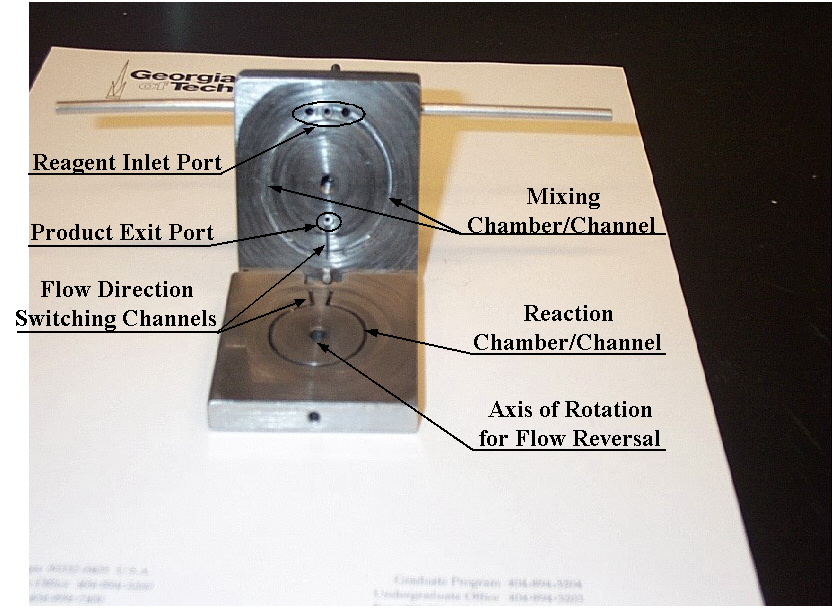
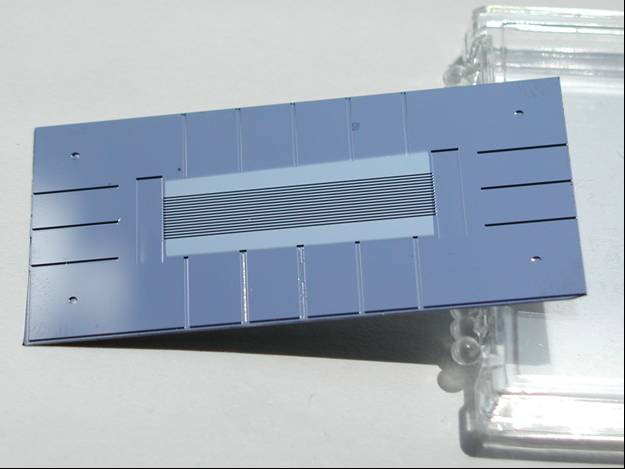
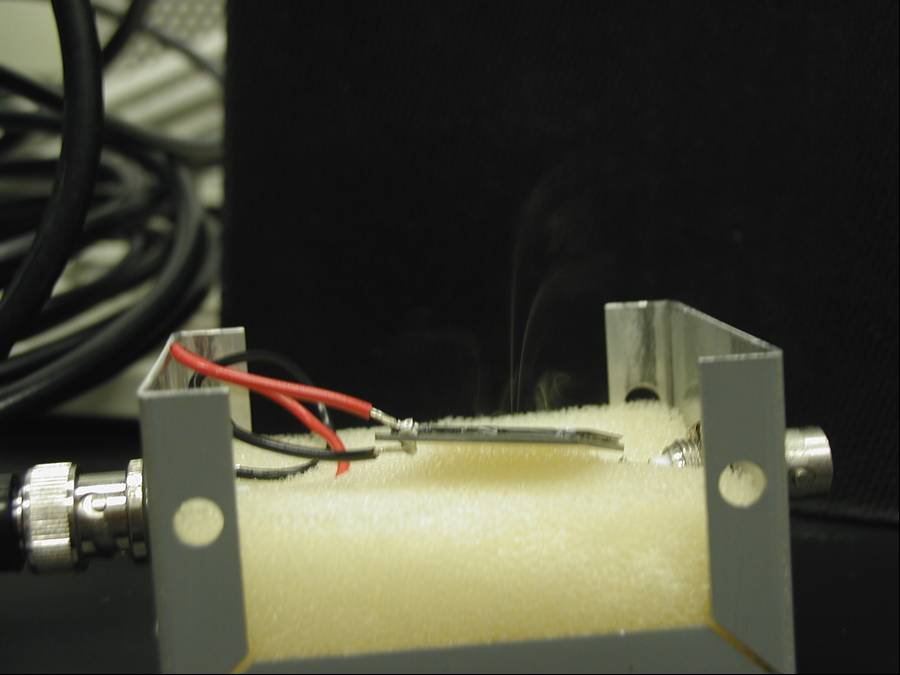
 Project #2:
Portable, Solid-State NanoReactor for Low Temperature, Energy Efficient Photocatalytic Disinfection of Air/Water Streams"
Project #2:
Portable, Solid-State NanoReactor for Low Temperature, Energy Efficient Photocatalytic Disinfection of Air/Water Streams"
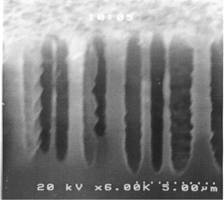

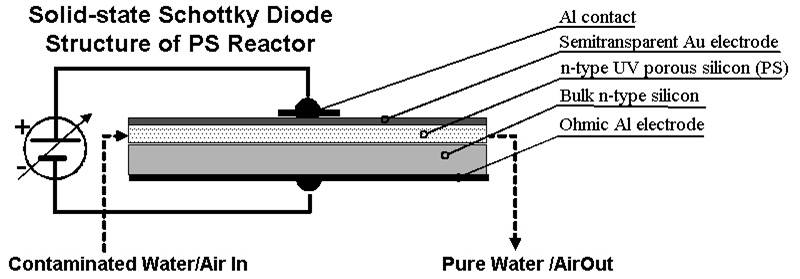
 Project #3
:
"Fluid Mechanics, Mass Transport, and Electrochemistry of Biochemical Interface Imaging Using AFM-Integrated Scanning Electrochemical and Optical Nanoprobes"
Project #3
:
"Fluid Mechanics, Mass Transport, and Electrochemistry of Biochemical Interface Imaging Using AFM-Integrated Scanning Electrochemical and Optical Nanoprobes"
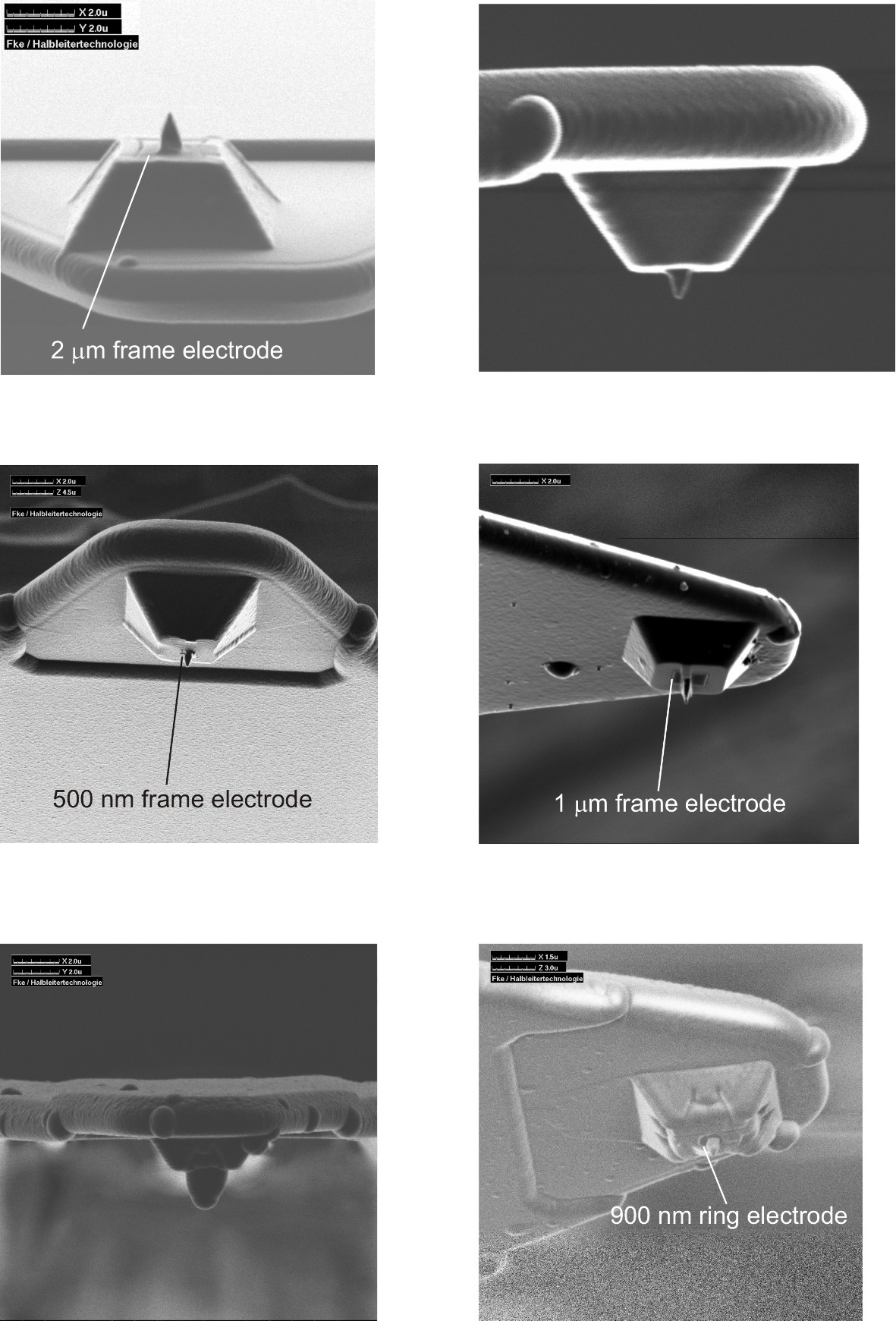
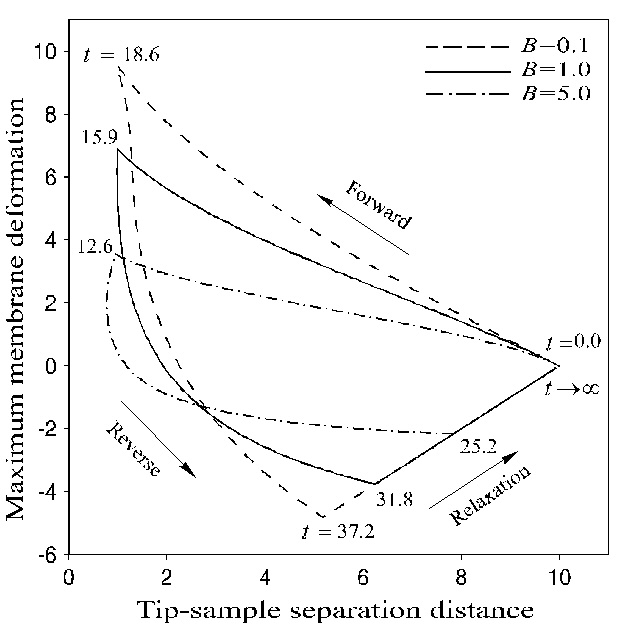
 Project #4
:
"Model-Based Optimal Design of (Bio)Chemical Sensors and Microfluidic Drug/Gene Delivery Devices"
Project #4
:
"Model-Based Optimal Design of (Bio)Chemical Sensors and Microfluidic Drug/Gene Delivery Devices"
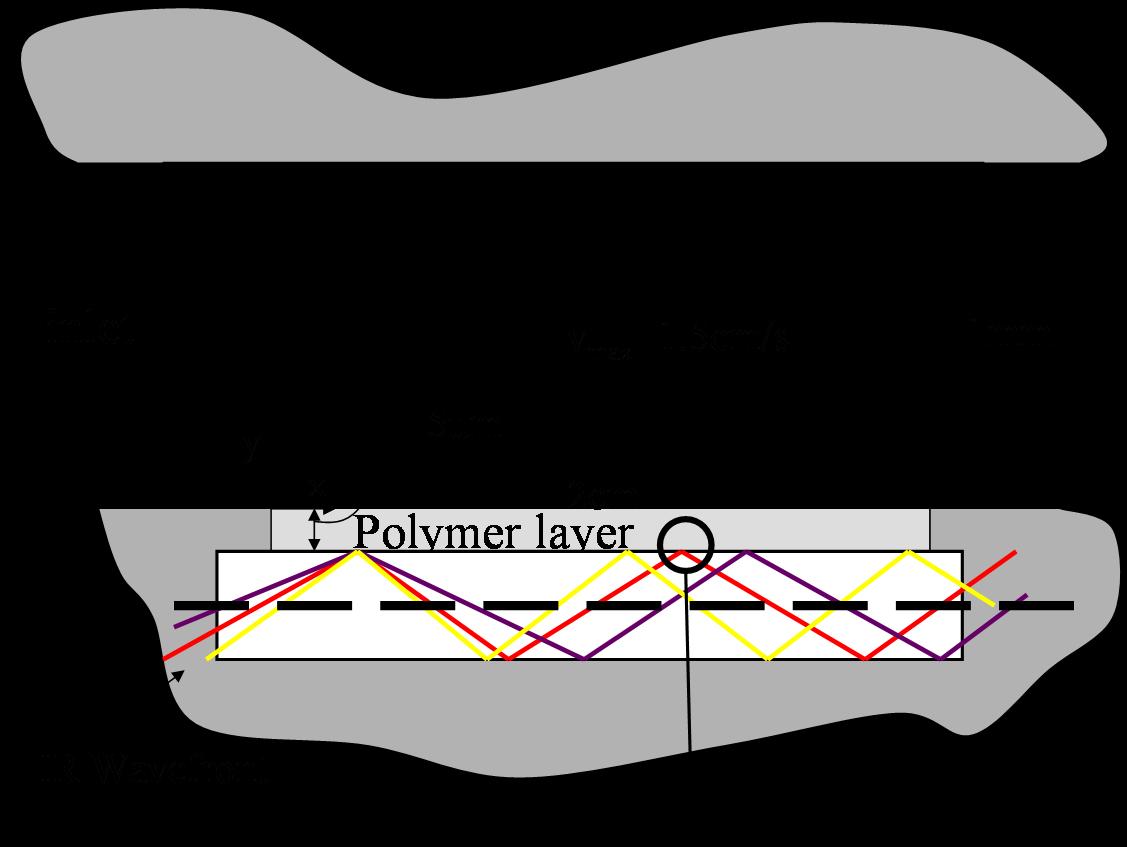
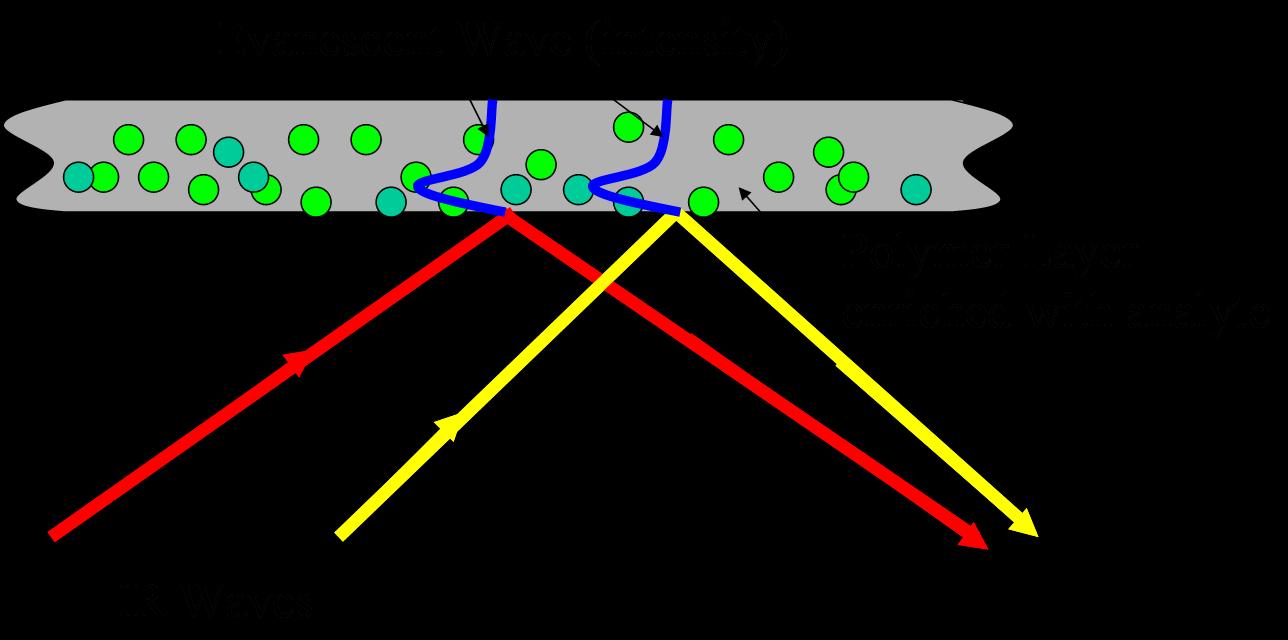
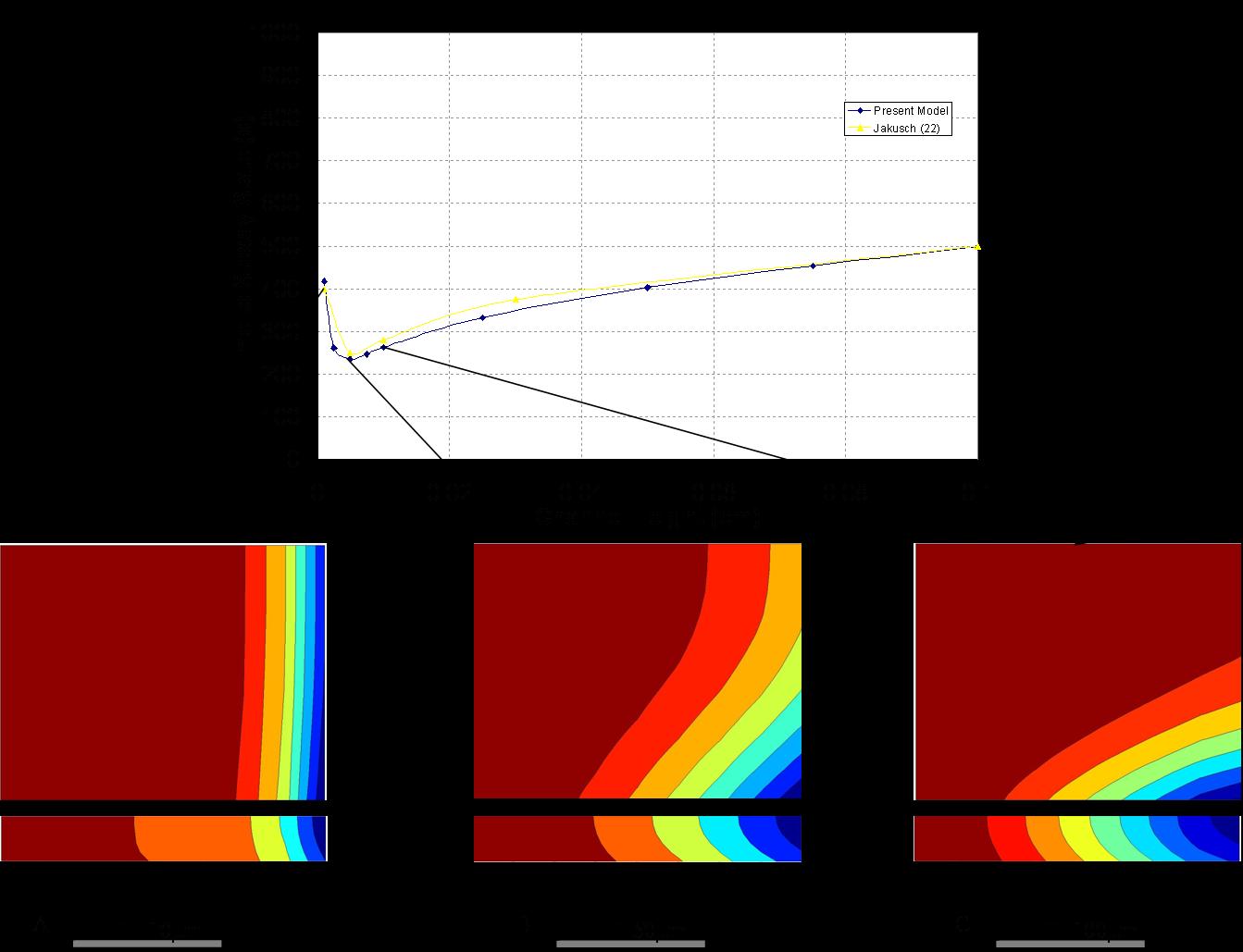
 Project #5
:
"Thermal Management of Next Generation Integrated Circuits and Interconnects"
Project #5
:
"Thermal Management of Next Generation Integrated Circuits and Interconnects"


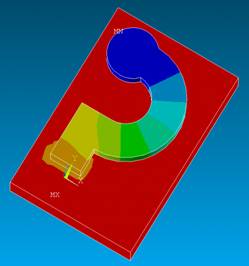
 Project #6
:
"Electron, Mass, and Heat Transport in E-Beam and Laser-Jet Chemical Vapor Deposition of Nanostructured Materials and Thin Film Coatings"
Project #6
:
"Electron, Mass, and Heat Transport in E-Beam and Laser-Jet Chemical Vapor Deposition of Nanostructured Materials and Thin Film Coatings"
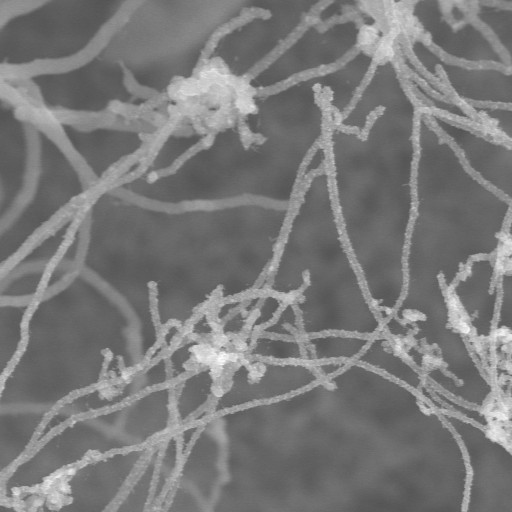
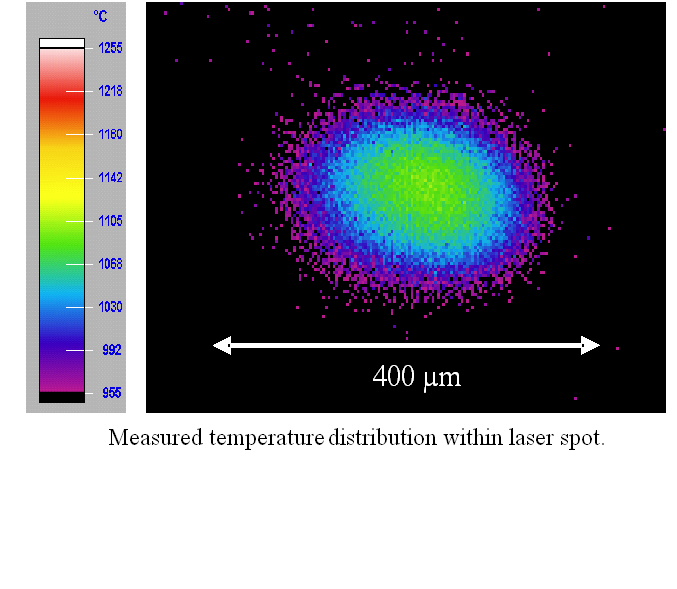
 Project 7: Scanning Mass Spectrometry (SMS) Probe and AMUSE (Array of Micromachined UltraSonic Electrospray) Ion Source for Mass Spectrometry
Project 7: Scanning Mass Spectrometry (SMS) Probe and AMUSE (Array of Micromachined UltraSonic Electrospray) Ion Source for Mass Spectrometry
 Project X: Creativity and Rigor in Research: Could We Marry
Them and How?
Project X: Creativity and Rigor in Research: Could We Marry
Them and How?
